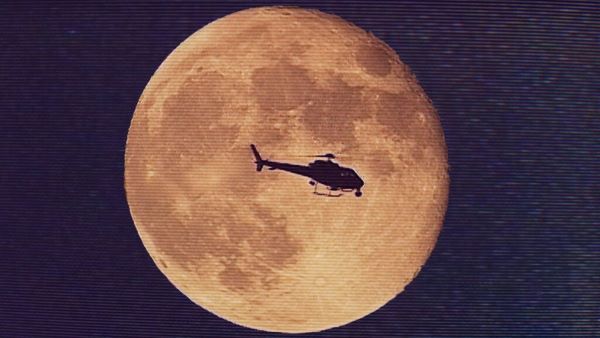
This fierce, at times lacerating documentary chronicles the rise of the Los Angeles News Service, a renegade outfit that single-handedly changed the television news industry. It was founded by a married couple, Bob and Marika Tur, and the film kicks off with how their relationship started: Marika, then a sheltered young college student, went out on a date with Bob, who was already a reporter. The night culminated on Skid Row with their taking photographs of blood stains. She, it goes without saying, came back for more.
Soon the pair are joined at the hip and covering crime scenes, fires, and other breaking news, often with Marika shooting video footage. Looking back on the tape courtesy of the service’s archives, it’s clear that the couple put themselves into some dangerous but also thrilling situations. Eventually, Bob and Marika marry and start a family. In one clip, we can hear that their first child, then an infant, is in the same car with them as a high-speed police chase breaks out.
But the film really takes off—literally and figuratively—when Bob is bitten by the helicopter bug, viewing the vehicle as a way to reach breaking stories ahead of the competition. It’s an expensive and risky move. The film captures the romance inherent to the idea of flight as well as the sense of freedom it offered via a lengthy montage of overhead shots all over Los Angeles.
Initially, Whirlybird seems like it will be telling an all-American success story as the Turs are joined by Bob’s mother, Judy, as well as a talented co-pilot named Lawrence Welk III (who is indeed a certain singer’s grandson). Making extensive use of the company’s aforementioned video archives, we see just how audacious it was, including staging rescues of people trapped by natural disasters in order to interview them afterwards. But the film also reveals the dark side of the Murs’ ability to capture incidents live and unfiltered, including arguably the first-ever live police shooting that set a precedent for where local news would go.
Similarly, Bob comes across as a charismatic presence while reporting alongside Marika’s footage. However, as the business grows, so does the pressure to top what they did last. Always demanding as far as telling his spouse what to do in the field, Bob’s pushy behavior toward her and Welk becomes increasingly disturbing and abusive. What’s more, we get a front-row seat to it, as it’s all captured on film. Given that the Turs participated in the documentary and, in theory, gave their blessing to whatever footage was recycled, it’s both surprising and remarkable to see their troubled marriage depicted in such unflinching terms.
The film engages in armchair psychology to try and diagnose Bob’s ultimately self-destructive behavior: he had an abusive father and what amounts to PTSD from getting too close to volatile news events over the years—the 1992 riots, the O.J. Simpson saga, among many. It all goes a ways toward making him a little more sympathetic. In addition, Yoka reveals early on that Bob elected to undergo a major life change post–Los Angeles News Service (anyone who Googles “Bob Tur” can figure it out in a second), and that entices us enough to wade through the ensuing familial and professional carnage to find out if the news trailblazer eventually finds some peace.
Yet by the end, the added focus on Bob works against the film as it comes at the expense of others—Marika, in particular, is mostly reduced to Bob’s unfortunate victim. Still, Whirlybird remains fascinating in many respects: as a profile of innovators, a look back at iconic events in the histories of Southern California and the rest of the country, and as a rebuke of toxic masculinity.
















Leave A Comment